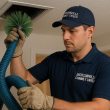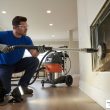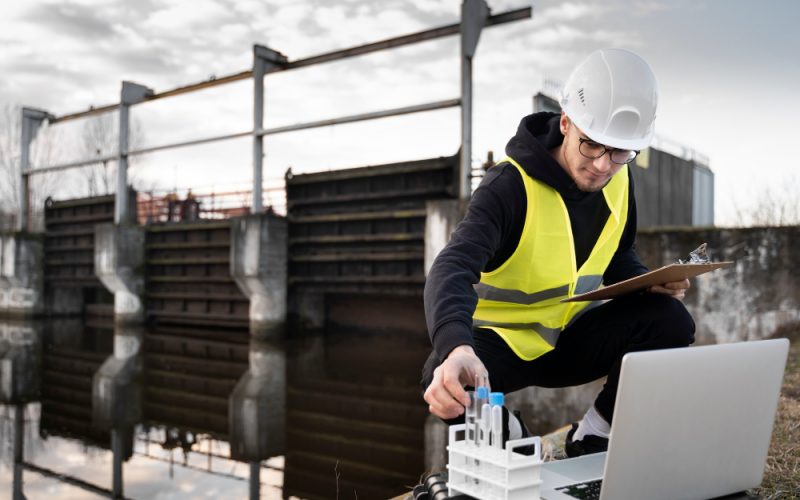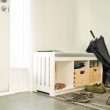With growing concerns about allergens, airborne pathogens, and pollution, especially post-pandemic, both homeowners and businesses are re-evaluating how they manage air quality in indoor environments. One of the most promising innovations in this space is HVAC automation. But can it really improve indoor air quality significantly?
Let’s dive into what HVAC automation is, how it works, and the extent to which it can enhance the quality of the air we breathe indoors.
What is HVAC Automation?
HVAC (Heating, Ventilation, and Air Conditioning) automation involves using smart technologies and control systems to optimize HVAC performance. This means integrating sensors, timers, machine learning algorithms, and real-time monitoring to automatically adjust temperature, humidity, ventilation rates, and filtration processes.
Automated HVAC systems can:
- Detect and respond to changes in indoor air quality
- Adjust airflow and filtration based on occupancy or pollutant levels
- Integrate with smart building systems for efficiency and comfort
- Why Indoor Air Quality Matters
- Dust, pollen, and pet dander
- Volatile Organic Compounds (VOCs) from furniture, paints, and cleaning products
- Mold spores from moisture
- Carbon dioxide (CO₂) buildup from inadequate ventilation
- Pathogens like bacteria and viruses
Poor indoor air quality can trigger or worsen respiratory conditions, such as asthma or allergies, and may even affect cognitive performance and sleep quality.
The Role of HVAC Systems in IAQ
They may include filters to trap larger particles, but they’re typically static and not responsive to real-time changes in air quality.
That’s where HVAC automation becomes a game-changer.
How HVAC Automation Improves Indoor Air Quality
1. Real-Time Air Quality Monitoring
Smart HVAC systems can be equipped with sensors that monitor levels of CO₂, VOCs, humidity, and particulate matter (PM2.5 and PM10). These sensors continuously feed data to the central control system, which then adjusts HVAC operations accordingly.
Example: If VOC levels spike after a cleaning session, the system can automatically increase ventilation to dilute indoor pollutants.
2. Demand-Controlled Ventilation
Traditional systems provide a fixed amount of fresh air regardless of how many people are in a room. Automated HVAC systems, on the other hand, use occupancy sensors or CO₂ monitors to deliver ventilation only when needed.
This improves air quality while conserving energy. Spaces are ventilated more thoroughly when occupied, ensuring contaminants like CO₂ don’t accumulate to unhealthy levels.
3. Smart Filtration and Air Purification
Automation allows HVAC systems to detect when filter efficiency drops or when air quality deteriorates, triggering a higher fan speed or alerting maintenance teams. Some advanced systems even include UV-C lights or ionizers that activate only when pollutant levels rise.
Bonus: Smart reminders for filter replacement ensure filters are changed on time — a crucial factor in maintaining healthy air.
4. Humidity Control
Humidity plays a key role in IAQ. Automated systems continuously monitor humidity and adjust humidifiers or dehumidifiers to maintain the ideal range (30%–50%).
Benefits of HVAC Automation for Air Quality
1. Consistent Air Quality
Because automated systems operate continuously and adapt in real-time, indoor air quality remains more stable throughout the day, regardless of occupancy or outdoor conditions.
2. Energy Efficiency
Improved IAQ often comes at an energy cost (e.g., increased ventilation), but automation helps strike a balance by supplying fresh air only when necessary. This leads to lower utility bills without compromising health.
3. Healthier Occupants
Cleaner air translates to fewer allergy and asthma attacks, reduced absenteeism, and better sleep and productivity. In commercial settings, this can lead to measurable improvements in employee well-being and performance.
4. Early Detection of Air Problems
Automated HVAC systems can flag potential problems (like a sudden spike in CO₂ or humidity), allowing for prompt corrective action before occupants even notice.
Challenges and Limitations
While HVAC automation offers significant promise, it’s not without its caveats:
1. Initial Investment
However, many see a return on investment (ROI) over time via energy savings, reduced maintenance, and improved occupant health.
2. Complexity and Maintenance
Automated systems require professional installation and ongoing calibration. Sensor drift, software bugs, or network issues can affect performance if not properly maintained.
3. Limited by Building Design
In some older buildings, ductwork or insulation may limit the effectiveness of even the most advanced HVAC automation. Retrofitting may be necessary.
The Future: Integration with Smart Building Systems
As smart homes and buildings become more common, HVAC automation will increasingly integrate with broader building management systems (BMS). Imagine a system that:
- Uses outdoor air quality data to decide when to open or close vents
- Syncs with weather forecasts to pre-adjust humidity levels
- Communicates with occupancy sensors to optimize airflow in real-time
These systems not only improve IAQ but also help buildings meet green building standards like WELL and LEED.
Don’t Miss: Cost-Effective Retrofitting Columns with Carbon Fibre Technology
Final Thoughts
As awareness of indoor air quality grows, demand for intelligent solutions will rise. HVAC automation represents a convergence of health, comfort, and sustainability – and for many, it’s an investment worth making. Whether you’re upgrading your home system or managing a commercial property, prioritizing automated air quality control is a step toward a cleaner, smarter, and healthier future.












